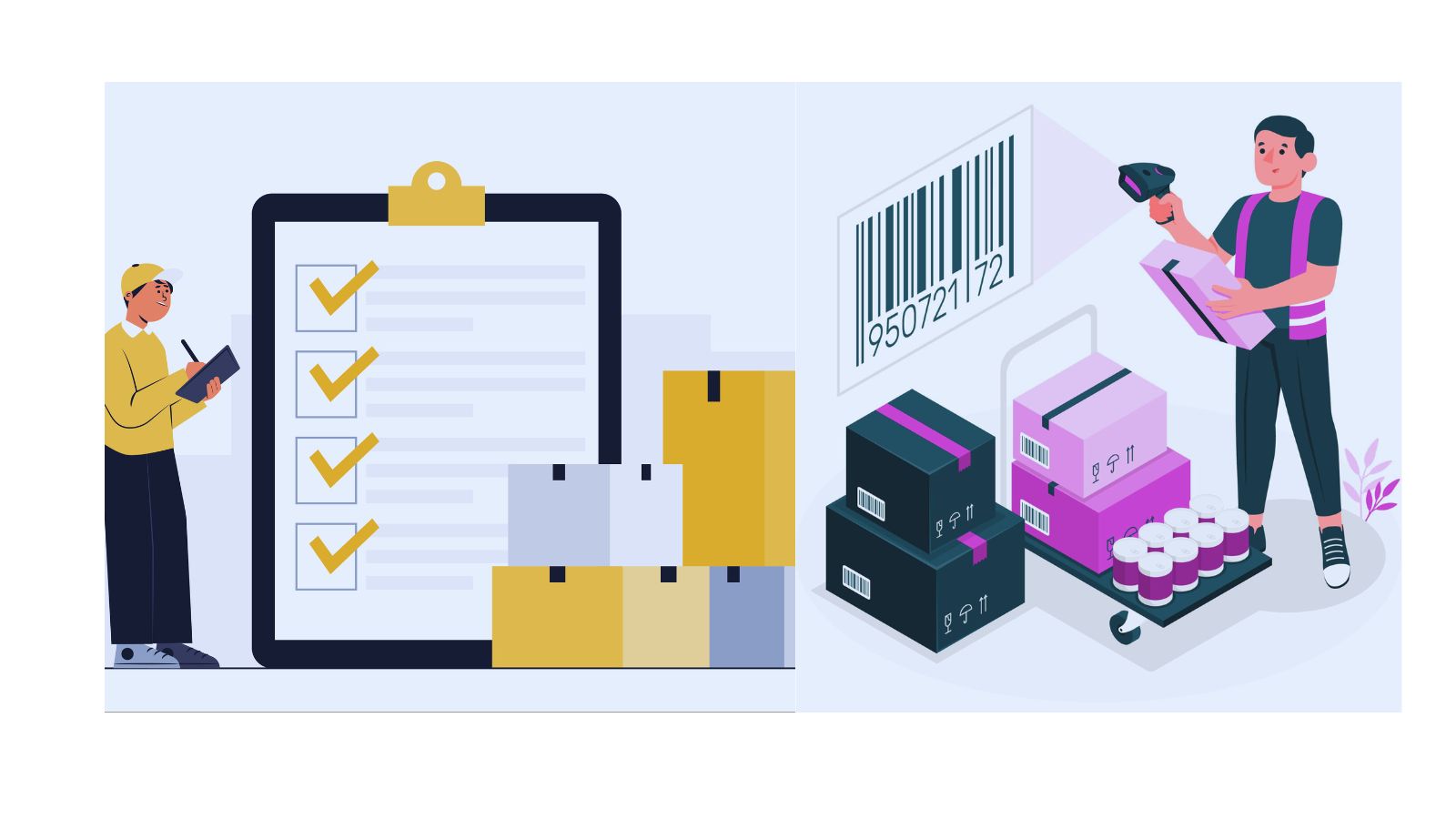How Much Does A Business Inventory Website Development Cost?
In the ever-evolving landscape of business and commerce, having a strong online presence is no longer an option; it's a necessity. One crucial element of this online presence is a business inventory website. Whether you are a small start-up or a well-established corporation, efficiently managing your inventory can make or break your success in the digital age. But as you contemplate the idea of building a business inventory website, one burning question stands out: “How much does business inventory website development cost?” In this blog, we will delve into the intricate world of business inventory websites, exploring why you need one, the various types available, and the critical factors that influence their cost. Managing inventory manually can be a daunting task, prone to errors and inefficiencies. An inventory website streamlines this process, allowing you to track stock levels, monitor product sales, and generate real-time reports, ultimately saving time and money. A user-friendly website can attract more customers and improve their shopping experience. Features like product search, detailed product information, and easy checkout can make a significant difference in customer satisfaction. An online presence extends your reach beyond the physical location of your business. Your inventory website can attract customers from different regions and even countries, leading to potential growth opportunities. In today's competitive market, having an inventory website can set you apart from competitors who haven't made the digital leap. It showcases your commitment to adaptability and convenience, which can be a valuable selling point. A basic inventory website provides fundamental features for inventory management. It allows you to list your products, update stock levels, and provide basic information to customers. This type is suitable for small businesses with limited budgets and straightforward inventory needs.Why Do You Need a Business Inventory Website?
Let's briefly discuss why having a business inventory website is crucial in today's competitive landscape.1) Efficient Inventory Management:
2) Enhanced Customer Experience:
3) Expanded Reach:
4) Competitive Advantage:
Types of Business Inventory Website
Now that we've established the importance of a business inventory website, let's explore the different types available. The choice you make here can significantly impact the overall development cost.(1) Basic Inventory Website
Share your project details to build your path toward success.
(2) E-commerce Inventory Website
An e-commerce inventory website goes a step further by enabling online sales. It includes features such as shopping carts, payment processing, and order tracking. This type is ideal for businesses looking to sell products directly to customers online.
(3) Enterprise-Level Inventory Website
For large corporations with complex inventory requirements, an enterprise-level inventory website is the way to go. This type offers advanced features like multi-location inventory management, integration with ERP systems, and robust reporting capabilities. While it comes with a higher price tag, it's essential for businesses dealing with vast inventories and multiple distribution points.
(4) Custom Inventory Solutions
Sometimes, off-the-shelf solutions don't quite fit your unique business needs. In such cases, opting for a custom inventory website can be the best choice. While this can be the most expensive option, it provides complete flexibility and tailored functionality.
Factors That Influence The Cost Of Developing A Business Inventory Website
Now, let's break down the key factors that influence the cost of building and maintaining a business inventory website.
1. Website Development
The first and most significant expense is the actual development of the website. Several factors come into play here:
a. Type of Website:
The complexity of your inventory website will dictate a significant portion of the cost. Will it be a simple e-commerce site, a more advanced system with real-time inventory tracking, or a bespoke solution tailored to your specific business needs?
b. Web Development Platform:
Choosing the right web development platform is crucial. Open-source platforms like WordPress and WooCommerce are cost-effective but may require more customization. Custom-built solutions offer more flexibility but can be pricier.
c. Design and User Experience:
The website's design, user interface, and user experience are critical for attracting and retaining customers. Investing in professional web design services can increase the cost but also boost the website's effectiveness.
d. Functionality and Features:
Consider the features you need for your inventory management, such as barcode scanning, order processing, and inventory alerts. The more features you require, the higher the development cost.
2. Hosting and Domain
Every website needs a hosting service to store its data and files. The cost of hosting can vary depending on factors like website size, traffic volume, and hosting provider. Additionally, you'll need to purchase a domain name, which typically incurs an annual fee.
3. Security
Ensuring the security of your inventory website is paramount, especially when dealing with sensitive customer data and financial transactions. Security measures like SSL certificates and regular security audits can add to the overall cost.
4. E-commerce Integration
If your inventory website involves eCommerce, you'll need to consider additional costs related to payment gateway integration, shopping cart development, and SSL encryption for secure transactions.
5. Content Management System (CMS)
A CMS allows you to manage website content easily. Depending on your choice, whether it's a free or premium CMS, there may be licensing or subscription fees involved.
6. Maintenance and Updates
Once your website is up and running, it requires regular maintenance and updates to ensure it functions smoothly. This includes software updates, security patches, and content updates. You can choose to handle this in-house or outsource it, affecting the overall cost.
7. Location of Development Team
The cost of development can vary based on the location of the development team. Developers in regions with a higher cost of living tend to charge more than those in lower-cost regions.
8. Project Timeline
If you need your inventory website to be developed quickly, it may require additional resources and could increase the cost.
How Much Does a Business Inventory Website Cost?
Now that we've dissected the key cost components, let's look at some ballpark figures to give you an idea of the investment required for a business inventory website development.
1. Basic Business Inventory Website
A basic inventory website with limited features, such as product listings and a contact page, can cost anywhere from $1,000 to $5,000. This assumes you're using a template-based platform and minimal customization.
2. Mid-Range Business Inventory Website
For a more comprehensive inventory management system with e-commerce capabilities, expect to invest between $5,000 to $15,000. This includes a custom design, additional features, and moderate complexity.
3. Advanced Business Inventory Website
If your business demands a highly sophisticated inventory website with real-time tracking, advanced reporting, and custom functionality, the cost can exceed $15,000 or more and reach into the six-figure range.
For large corporations with extensive inventories and complex requirements, an advanced inventory website is necessary. This investment ensures seamless inventory management across multiple locations and integration with other software systems.
4. Ongoing Costs:
Remember that the initial development cost is just the beginning. Ongoing costs include hosting fees, domain renewal, security updates, and maintenance, which can add up to a few hundred to a few thousand dollars annually.
It's recommended to consult with business inventory website development company to get an accurate cost estimate. They can provide you with quotes based on your requirements and help you determine the best approach to achieve your goals within your budget.
Conclusion
The cost of a business inventory website can vary widely based on factors such as the type of solution, customization, integration needs, and ongoing expenses. It's essential to carefully evaluate your business requirements and budget constraints before making a decision. While the upfront cost of a custom-built solution may be high, it can offer a tailored solution that perfectly aligns with your needs. On the other hand, inventory management software, eCommerce platforms, and plugins/add-ons provide cost-effective options for businesses with smaller budgets.
Don't miss out on the opportunity to optimize your inventory management and drive your business towards greater success.
Get in touch with us or request a free quote today to get professional business inventory website development services.









